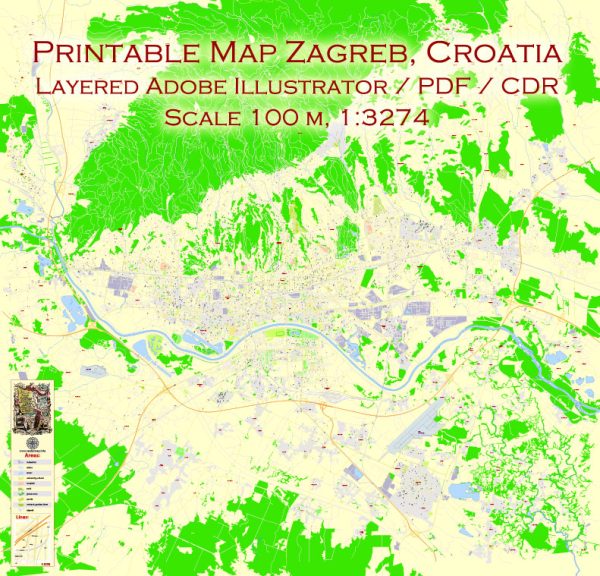Zagreb, the capital and largest city of Croatia, has a rich history that spans centuries, reflecting a blend of medieval, Austro-Hungarian, and modern influences. Here is an overview of the history of urban development in Zagreb:
- Medieval Origins: Zagreb’s history dates back to the medieval period when two separate settlements, Gradec and Kaptol, developed on neighboring hills. Gradec was a fortified town while Kaptol housed the Cathedral and ecclesiastical authorities. The two settlements were eventually united in the 19th century.
- Habsburg Influence: In the 16th century, Zagreb came under Habsburg rule, and the city began to flourish as an administrative and economic center. The Habsburgs left a significant impact on the city’s architecture, and Zagreb became an important hub within the Austro-Hungarian Empire.
- Ban Jelačić Square: The central square of Zagreb, Ban Jelačić Square, has been a focal point since the 17th century. It has evolved over time, witnessing changes in urban design and architecture. The square is named after Josip Jelačić, a key figure in Croatian history.
- 19th-Century Expansion: The 19th century brought significant urban development to Zagreb. New neighborhoods emerged, and the city walls were dismantled, allowing for expansion beyond the medieval core. The Lower Town (Donji Grad) developed during this period, characterized by wider streets and grand buildings.
- Cultural and Educational Institutions: Zagreb became a center for culture and education in the 19th century. The Croatian National Theater, the University of Zagreb, and other cultural institutions were established, contributing to the city’s intellectual and artistic life.
- Yugoslav Period: After World War I, Zagreb became the capital of the Kingdom of Yugoslavia. During the socialist era of Yugoslavia, the city experienced further growth and modernization, with the development of residential areas, infrastructure, and industry.
- Independence and Post-1991: With the dissolution of Yugoslavia in the early 1990s, Croatia declared independence, and Zagreb became the capital of the newly formed Republic of Croatia. The city played a crucial role during the Croatian War of Independence. In the post-independence period, Zagreb continued to develop as a European capital with a focus on cultural, economic, and tourist activities.
- Modern Urban Development: Zagreb has undergone modern urban development in recent years, with a focus on sustainable practices and preserving its historical charm. The city has invested in public spaces, transportation, and cultural amenities, making it an attractive destination for residents and tourists alike.
- Tourism and Heritage: The historic core of Zagreb, with its medieval architecture, Habsburg-era buildings, and vibrant street life, attracts tourists interested in history, culture, and contemporary urban experiences.
Zagreb’s history of urban development reflects its resilience, adaptability, and cultural richness, making it a dynamic European capital with a unique blend of influences from different historical periods.


 Author: Kirill Shrayber, Ph.D.
Author: Kirill Shrayber, Ph.D.